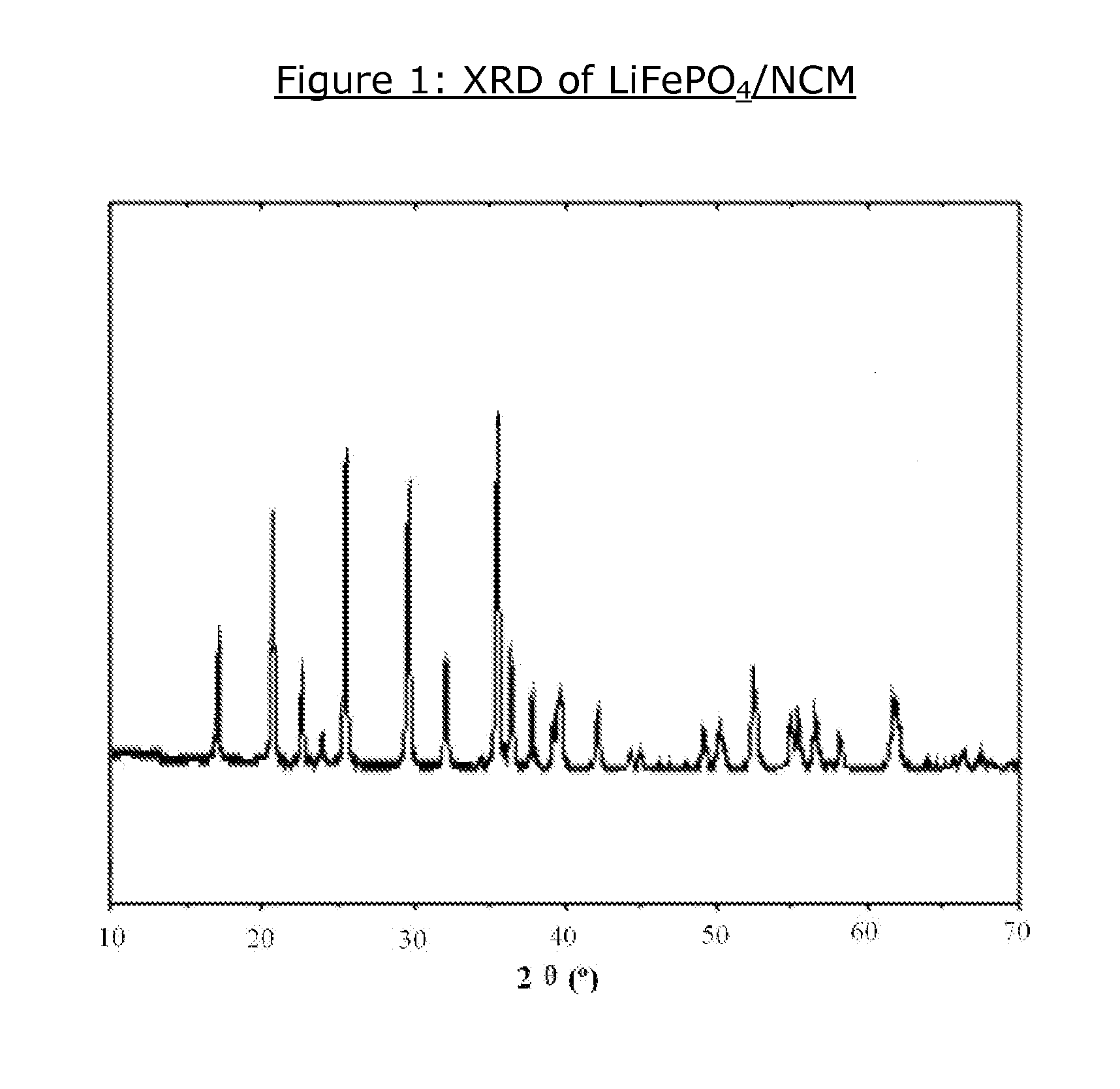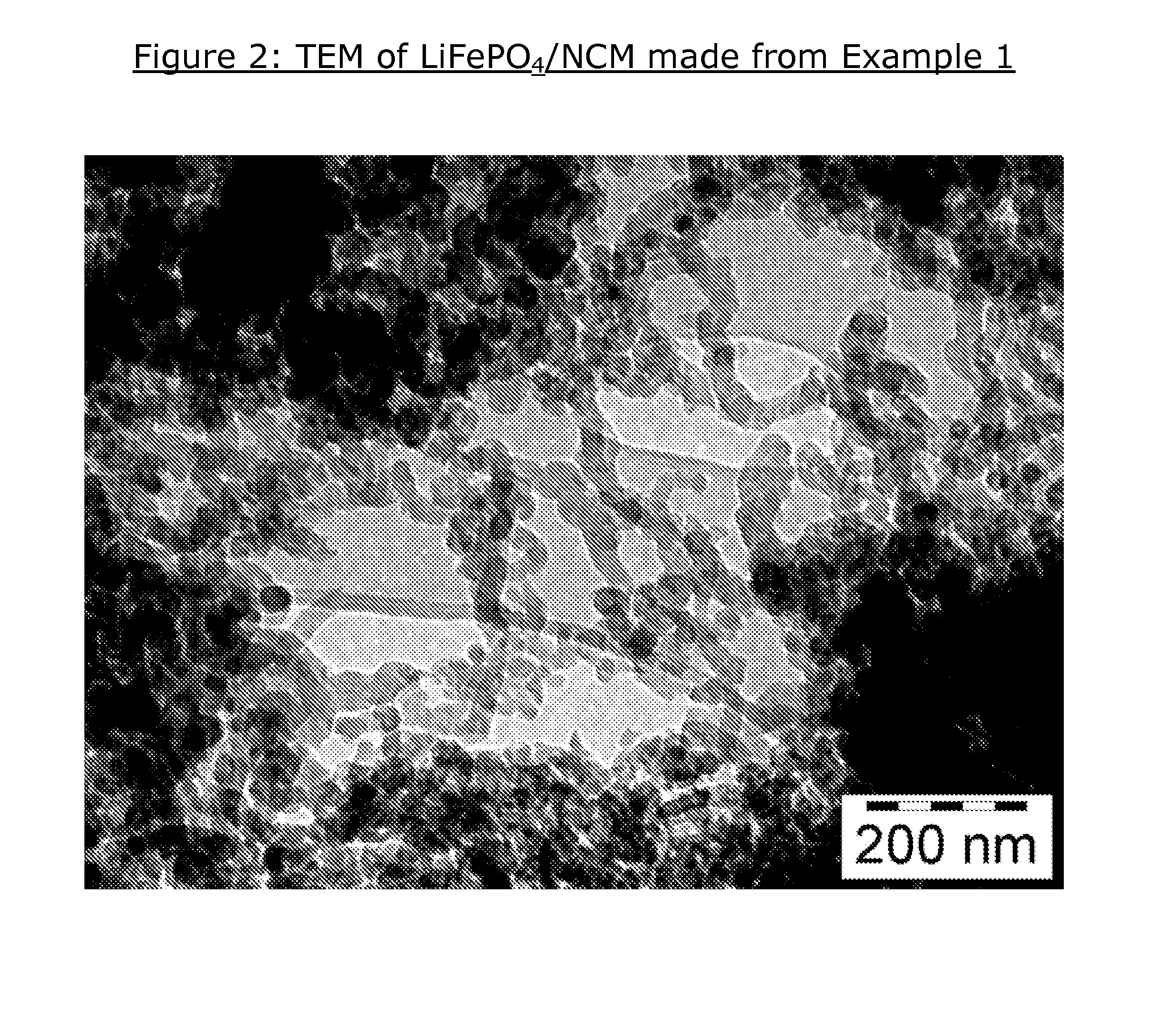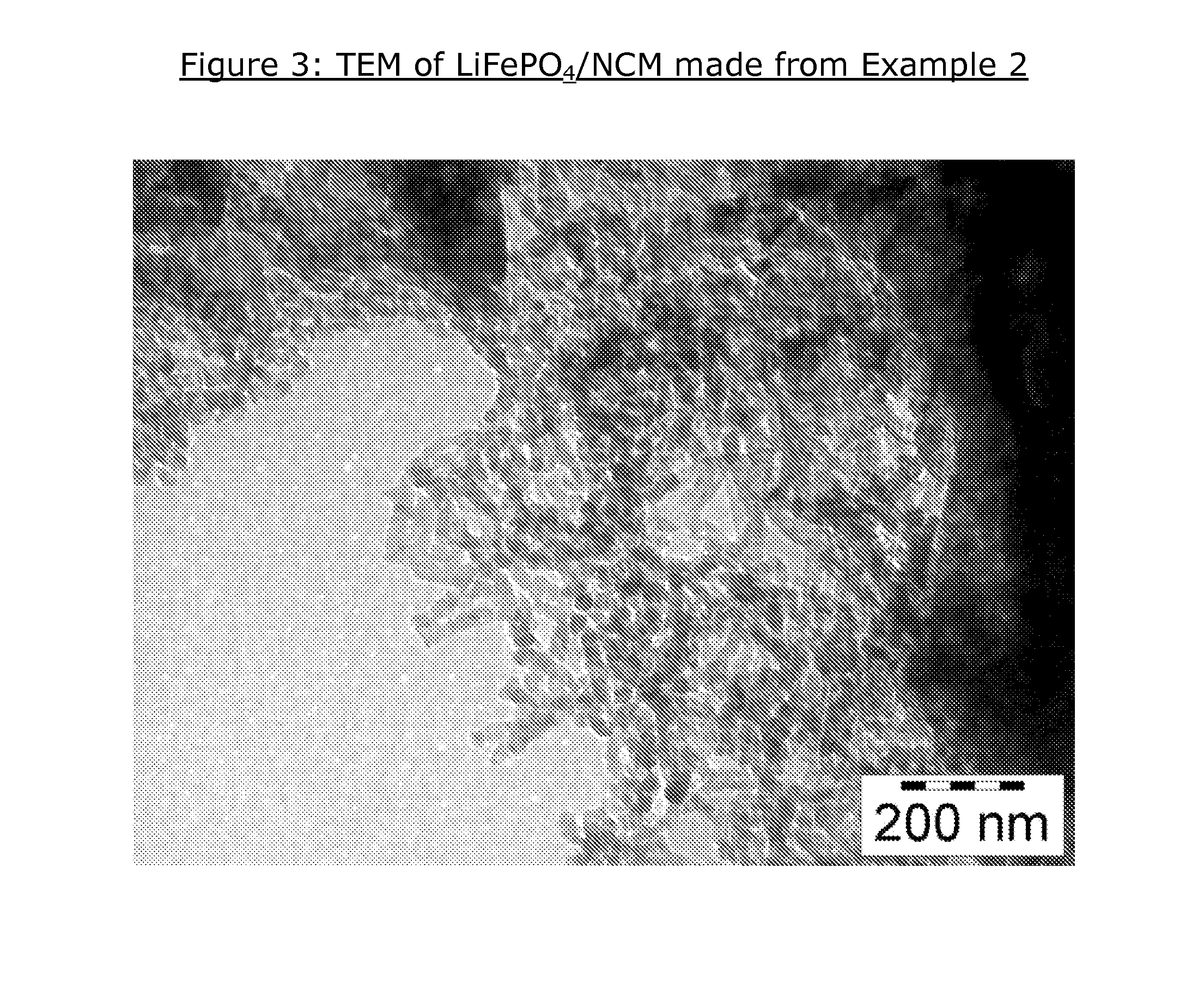Method for Producing a Carbon Composite Material
a carbon composite material and composite material technology, applied in the direction of non-aqueous electrolyte accumulator electrodes, coatings, nanotechnology, etc., can solve the problems of limited application of lithium ion rechargeable batteries, safety issues, and inconvenient cathode materials such as licoosub>2 /sub>,
- Summary
- Abstract
- Description
- Claims
- Application Information
AI Technical Summary
Problems solved by technology
Method used
Image
Examples
example 2
[0054]Li2CO3, NH4H2PO4 and FeC2O4.2H2O were mixed and ball-milled. A dispersing liquid, alcohol was added to form slurry which was ground for 6 hours through combined shaking and rotation actions. After milled, the is mixed slurry was dried to evaporate the alcohol in vacuum oven at 50° C. Then, the mixture was put in furnace and nitrogen was introduced at the flow rate of 50 ml / min and the temperature began to rise to the set temperature at the rate of 30° C. / min. When it arrived at the set point of 650-1000° C., the liquid petroleum gas was introduced into the tubular oven at the flow rate of 20 ml / min for 5-60 minutes. After that, the precursors were calcined at 500-900° C. under the nitrogen atmosphere for another 10-23 h. The product was cool down to room temperature under nitrogen atmosphere.
[0055]The synthesized LiFePO4 was mixed with Ni salt via slurry method and drying under vacuum at 60° C. The salts can be NiSO4, NiCl2 and Ni(NO3)2. In this example, the NiSO4 / LiFePO4 comp...
example 3
[0057]Li2CO3, NH4H2PO4, Ni particles and FeC2O4.2H2O were mixed and ball-milled by ZrO2 balls in a planetary micro mill. A dispersing liquid, alcohol was added to form slurry which was ground for 6 hours through combined shaking and rotation actions. After milled, the mixed slurry was dried to evaporate the alcohol in vacuum oven at 50° C. Then, the mixture was put in furnace and nitrogen was introduced at the flow rate of 50 ml / min and the temperature began to rise to the set temperature at the rate of 30° C. / min. When it arrived at the set point of 650-1000° C., a Ni mist was introduced to the furnace. The mist was produced from a 0.1˜2.0 M Ni solution (mixture of NiCl2 and NiSO4). The argon gas flow was turned off and ethylene as well as hydrogen gas where simultaneously introduced into the furnace at a flow rate of 100 ml / min each for 90 minutes. After that, the precursors were calcined at 500-900° C. under the nitrogen atmosphere for another 10-23 h. The product was cool down t...
PUM
| Property | Measurement | Unit |
|---|---|---|
| temperature | aaaaa | aaaaa |
| electronic conductivity | aaaaa | aaaaa |
| temperature | aaaaa | aaaaa |
Abstract
Description
Claims
Application Information
 Login to View More
Login to View More - R&D
- Intellectual Property
- Life Sciences
- Materials
- Tech Scout
- Unparalleled Data Quality
- Higher Quality Content
- 60% Fewer Hallucinations
Browse by: Latest US Patents, China's latest patents, Technical Efficacy Thesaurus, Application Domain, Technology Topic, Popular Technical Reports.
© 2025 PatSnap. All rights reserved.Legal|Privacy policy|Modern Slavery Act Transparency Statement|Sitemap|About US| Contact US: help@patsnap.com



